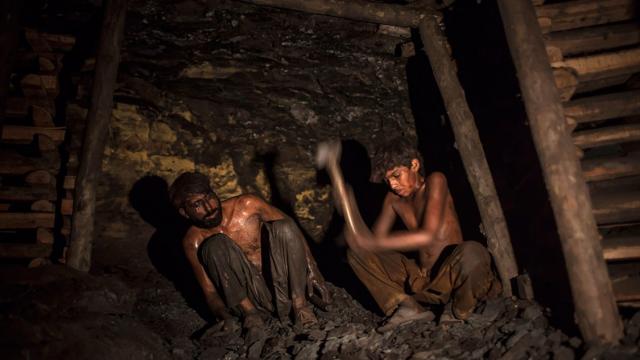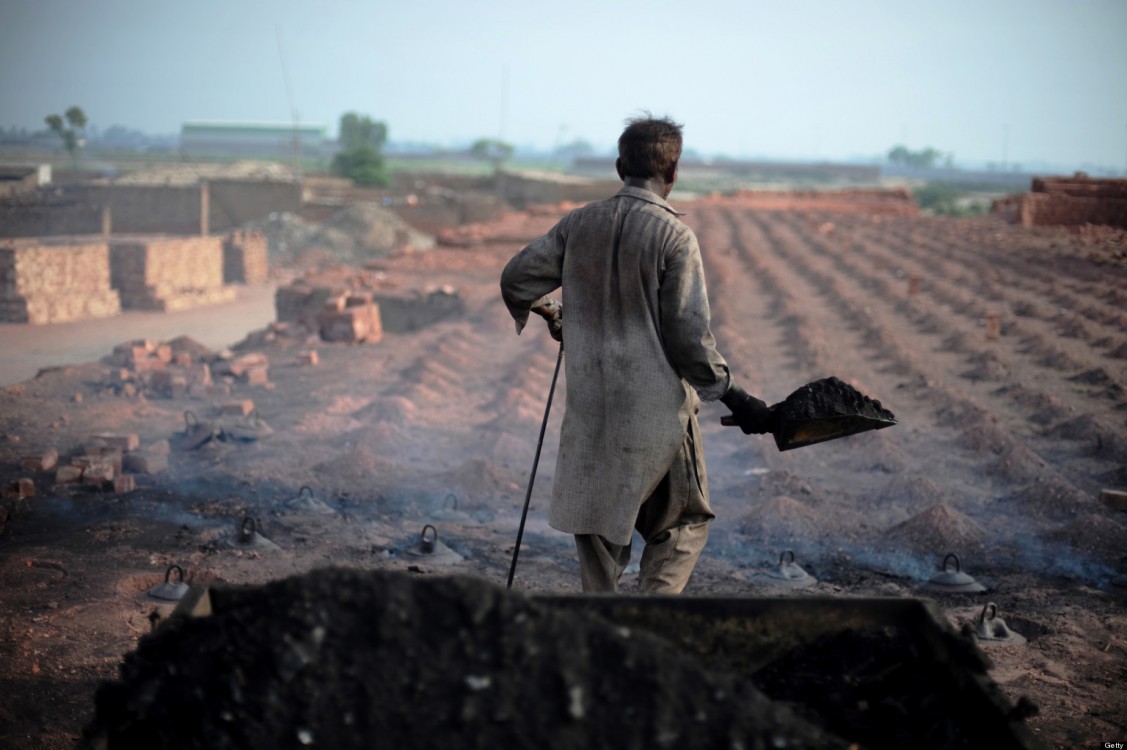
PESHAWAR, Pakistan – For environmentalists, coal has always been a bad word. It is considered a disaster for the planet though it helped bring the industrial revolution. Now the world is slowly cutting back on its use due to global warming. But Pakistan, like other developing economies, is turning to coal to expand its electricity grids that will release more soot particles into the air.
On its projected track, Pakistan will generate a total capacity of over 23,000 megawatts of electricity from coal in the next few years to overcome its steep energy requirements. The country has other alternatives sources of power generation available, but due to pressure on the government to overcome power shortages, it opted for coal projects that can start production within a few years.
The bulk of Pakistan's coal plants are being constructed under the China Pakistan Economic Corridor, a $46 billion plan that includes $5.8 billion worth of coal power projects, expected to be completed by early 2019 as part of CPEC’s “Early Harvest” developments. Prime Minister Nawaz Sharif believes the trade corridor amounts to a “game changer” for the country.
But the country that is already struggling to deal with the rising risks of floods, erratic rains, melting glaciers and depleted water reservoirs due to global warming. Under these circumstances, burning coal will increase the threat to Pakistan's climate, since coal is the biggest single contributor to the global rise in emissions that scientists say are causing the earth’s temperature to rise.
In December 2015, leaders from 175 countries gathered in New York to sign the Paris Agreement, aimed at halting and eventually reversing the rise in carbon emissions in order to keep the increase in global temperatures below 2 degrees Celsius. Western financial institutions have been steadily pulling back their funding on coal projects, but Pakistan, dependent on foreign funds for its development projects, found China as a major source to increase its coal based power production.
“These projects will bring economic prosperity and help generate more employment opportunities, besides adding power to the national grid,” said Prime Minister Sharif while inaugurating the 1,320 MW Qadirabad plant in the Sahiwali district of Pakistan.
Environmentalists Express Criticism
Activists in the country fear coal based power plants will destroy the fragile environment that is already under threat of overpopulation, as well as add to air and water pollution and the overall exacerbate conditions of climate change.
“Burning coal is disastrous for our environment. It challenges the very existence of living species,” Farid A. Malik, former chairman of the Pakistan Science Foundation, told Occupy.com. He added that Pakistan's policy makers are pursuing mistaken policies in regards to global warming, as carbon-based dirty fuels like coal are increasingly discouraged worldwide.
Farid, who recently presented his paper “The Future of Coal” at a St. Petersburg coal conference, stressed the need to generate Synthetic Natural Gas (SNG), as importing coal will among other things be a burden on the national economy. Pakistan last year set a goal to reduce its greenhouse gas emissions by 30 percent by 2025, which seems difficult to materialize under current policies. The government claims it has installed ultra-low emission upgrades for its coal based power plants. But Farid believes “burning coal will release oxides and no such technologies have the capacity to trap it.”
Farid advised the government that, like other parts of the world, Pakistan has the option to use its huge coal reserves for generating SNG, a steam-oxygen conversion where coal is gasified using steam and oxygen. “It is more environment-friendly, when this coal can also be used as liquid gas and the country can get rid of its LNG imports,” he added.
Pakistan a "Low Emitter" of GHGs
Pakistan remains a low emitter of greenhouse gases per capita, yet global emission are affecting the country disproportionately. "We contribute hardly 0.37 percent to world emissions, however we are facing the severe impacts as we are living in close proximity with the world's top emitters, Indian and China,” said Dr. Inamullah, associate professor and deputy director of Climate Change Center at the University of Agriculture in Peshawar.
Dr. Inamullah said that from 1993 to 2013, Pakistan was eighth in the number of natural calamities it suffered. From 2014 until now, it has risen to fifth due to floods, heavy rains, draughts and heat waves that have killed thousands. Inamullah said the country shouldn’t invest in coal based power generation plants since it has more options in hydro, wind and solar.
Country's Urban Air Pollution the Most Severe in the World
Though it is a low emitter of GHGs, Pakistan is still ranked third in the world with 110,000 premature deaths last year caused by air pollution, according to recent study published by the journal Nature. India was ranked second, with 645,000 deaths, and China was first with 1.36 million deaths from air pollution. The World Bank in 2014 asked Pakistan to take immediate measures to reduce its levels of urban pollution, which it considered among the most severe in the world.
The World Bank issued a report saying that already in 2005, more than 22,600 adult deaths in Pakistan were attributable to urban ambient air pollution. Air pollution alone causes more than 80,000 hospital admissions here annually, nearly 8,000 cases of chronic bronchitis, and almost 5 million cases of lower respiratory cases among children under five.
In fact, the 2014 Environmental Performance Index, researched by Yale University, positioned Pakistan 148 among 178 countries in the category of human health caused by environmental damage and poor air quality. At present, Karachi, the commercial hub, is considered worst among 261 cities in the world, with more than one thousand deaths last summer due to heat weaves.
All the more reason, many believe, that coal should be given the boot in Pakistan, not the welcome mat.
“For environmentalists, coal is a bad word,” said Dr. Shafiq Ur Rahman, a professor in the Department of Environmental Sciences at University of Peshawar. “This will not only tarnish our image in the international community, as the world is cutting back on its use of coal for fuel, but also destroy our environment.”
Government’s Views
According to data of the federal Ministry of Water and Power, Pakistan also has an estimated 60,000MW of hydropower potential, of which only 11 percent has been tapped so far. The country has been facing a grave energy crisis in the past decade, which successive governments have failed to solve. The politics of the country mainly revolves around energy shortage-related issues.
Pakistan’s ruling political party, which has also made tall claims about ending the electricity crises within months, won't face general elections until 2018. The party has failed to deliver on its promises and solve the pressing issue, and now a target has been fixed to end the energy shortage by 2018. In the China Pakistan Economic Corridor, 75 percent of projects are energy related.
“Coal based power plants have been selected [as] an immediate solution to our pressing energy issues,” said Khuram Dastagir, a senior federal minister of commerce. “We have planning for hydro projects but hydro will take a lot of time and government has to deal with the menace of electricity shortage within a minimum time.”
3 WAYS TO SHOW YOUR SUPPORT
- Log in to post comments












